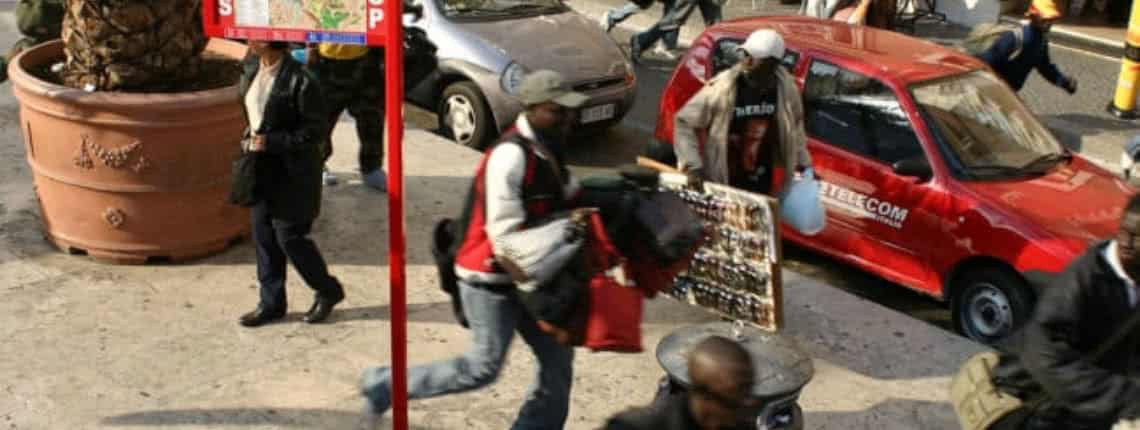The WIEGO Urban Policies Team analyzed news articles on street vendors from six continents over the past 18 months to gain a better understanding of how these informal workers are — or, more precisely, “aren’t” — being incorporated into 21st-century cities. A troubling portrait emerged of widespread evictions in urban hubs everywhere — from New York to New Delhi.
This article is the first part of an on-going series to monitor and analyze the news on WIEGO’s key worker groups — domestic workers, home-based workers, street vendors and waste pickers — to track global trends as they happen. Our goal is to provide insights to better inform local and national actions, global solidarity for street vendors and better policymaking to ensure that cities of the future are cities for all.
We have all seen the disturbing headlines and images from Bangkok to Buenos Aires with riot-gear-ready police facing off with street vendors. Although WIEGO’s previous research has shown the pervasiveness of exclusionary practices faced by street vendors in cities — 50 cases of major evictions in a three-year period — we wanted to look at up-to-date information to see if the situation has improved.
What follows is a disturbing picture of eviction after eviction — sometimes quite brutal in action and outcome.
Using WIEGO’s Global Monitoring System (GMS), which systematically curates informal economy news and to date has over 5,500 street vendor articles, we reviewed over 500 articles in four languages — English, French, Portuguese and Spanish — from six continents to gain insights into the global reality.
With economic recession lingering, the rise of the right in many countries, and an increased flow of migrants, we wanted to know if exclusionary trends have intensified. What follows is a disturbing picture of eviction after eviction — sometimes quite brutal in action and outcome.
We take you continent by continent through the situation of street vendors as reflected in the media in hopes that this dismaying global picture will inspire more collective action and political will to fulfil globally agreed commitments contained in the Sustainable Development Goals and the New Urban Agenda. This review is more than a global portrait; it is a global call to action, and at the end, we showcase ideas for moving forward an inclusive urban agenda.
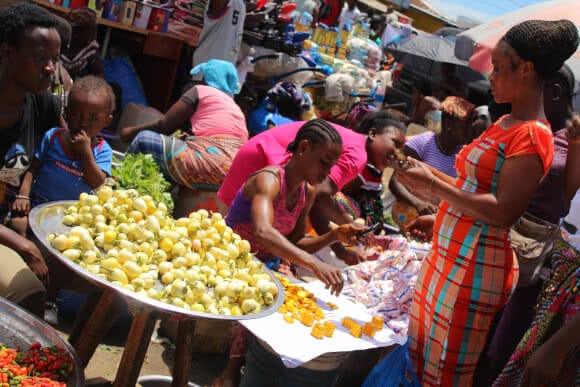
Africa: Street vendor evictions continue in a drive to ‘beautify’ and combat disease, but also punish
Zimbabwe is facing its worst economic crisis in a decade. Zimbabweans have long relied on informal vendors for all manner of necessities. Yet street vendors are subject to constant harassment. The violence the Mugabe regime frequently meted out against vendors (and slum dwellers) has continued under President Mnangagwa’s regime.
Notable evictions occurred in August 2018 when anti-riot police were deployed across Harare, clearing informal traders — a move widely seen as the president’s revenge for vendors voting for the opposition in the national elections. In September 2018, street vendors were banned in response to a cholera outbreak.
Zambia, like Zimbabwe, has a long history of ambivalence towards vendors, peppered with violent evictions. A 2007 ordinance bans vending in the capital. In early 2018, the police and army invoked this legislation and demolished over 10,000 stalls. This operation was in response to a cholera outbreak, but in other Zambian cities, like Kitwe, street vendor evictions are motivated by beautification efforts.
Nigeria has similarly repressive legislation, with the additional caveat that purchasing from vendors is criminalized. The Lagos State’s law enforcement unit — Kick Against Indiscipline — is a constant threat to street vendors.
Kampala, Uganda, is another case of periodic vendor evictions driven by political expedience. As has happened before in the city, in November 2018, the Minister of Kampala issued a directive to evict all street vendors to create “order in the city”.
Nigeria has similarly repressive legislation, with the additional caveat that purchasing from vendors is criminalized.
There were only two notable cases of inclusive practices reported in the media from Africa. In a rare case of cooperative street vendor management, the Monrovia City Corporation signed a memorandum of understanding with the Federation of Petty Traders and the Informal Workers’ Union of Liberia (FEPTIWUL) in September 2018 as part of an effort to ensure a smooth working relationship between petty traders and the municipal government of Monrovia. In Kenya, the Draft Protection to Livelihood and Regulation of Street Vending Bill promises to license street vendors, providing livelihood rights and social security and shielding them from police harassment.
Read WIEGO’s blog article, “Liberia’s Street Vendors Pioneer New Approach with City Officials” on the promising example from Monrovia.
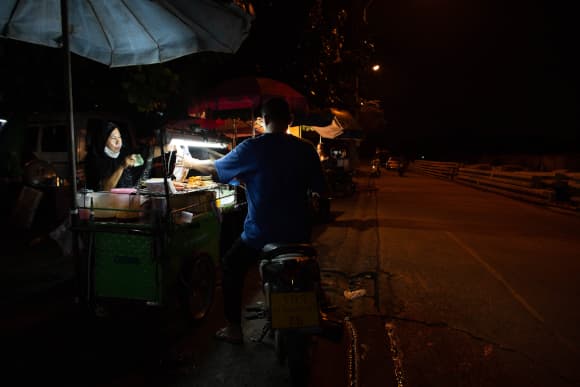
Asia: Bangkok authorities evict thousands of its famous vendors, while India struggles with implementing progressive street vending legislation
In Asia, street vending in Bangkok continues to receive significant media attention. Prior to the military coup of 2014, Bangkok was viewed as a case of progressive integration of vendors. However, since 2014, under orders from the military junta, the Bangkok Metropolitan Administration (BMA) has systematically removed vendors under the motto “return the footpath to pedestrians”.
The BMA reports to have moved 20,000 street vendors from 478 locations and has identified 205 more locations “to address”. These figures reflect only licensed vendors; thousands more unlicensed vendors have also been affected. The local and international press have widely condemned these actions, and there has also been significant resistance from vendors.
The BMA reports to have moved 20,000 street vendors from 478 locations and has identified 205 more locations “to address”.
India’s Street Vending (Protection of Livelihood and Regulation of Street Vending) Act of 2014 is widely cited as a good model. The Act mandates to create rules, schemes and local governance structures (Town Vending Committees) that include vendors and legitimize their right to vend. Concerns, however, have been raised about the pace and nature of implementation. These concerns are reflected in the media.
In August 2018, in Ahmedabad, Gujarat, for example, while the municipal corporation was conducting a street vendor census (a process stipulated in the Act), a demolition squad was reported to have erased 5,000 street vendors and 19,500 structures.
In Delhi, a Special Task Force created to deal with premises not conforming to the 2021 Delhi Master Plan has been regularly evicting vendors throughout the city. There are also cases where the implementation of the act may well lead to a reduction in the number of vendors (see Mumbai and Chandigarh).
In February 2019, the Centre for Civil Society, a Delhi-based think tank released its analysis of the implementation of the act, based on interviews across 30 states and scrutiny of court judgements. The report concluded that vendors continue to be excluded from critical urban space management decisions and describe implementation as ‘sluggish’.
Vendor organizations in India are increasingly looking to the courts for relief. Notably, the Supreme Court of India ruled that state governments must publish their street vendor rules. But not all rulings favour vendors. For example, in November 2018, the Punjab and Haryana High Court instructed the director general of police to remove all unauthorized businesses from footpaths.
In Delhi, a Special Task Force created to deal with premises not conforming to the 2021 Delhi Master Plan has been regularly evicting vendors throughout the city.
A previous review of WIEGO’s GMS suggested that China was a “hot spot”, with a dedicated urban security force called the Chengguan, which regularly harassed and removed vendors, confirmed by academic analyses. Recently, very little coverage could be found from online sources.
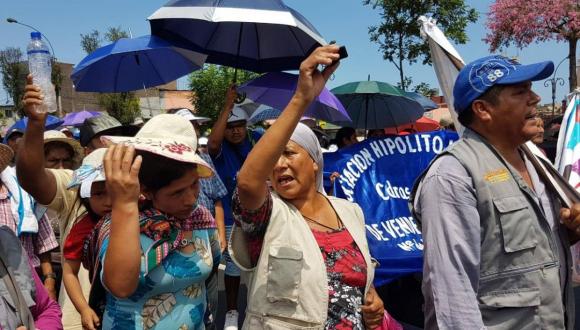
Latin America: Pressures on the streets intensify amid the Venezuelan crisis and economic recession
The deepening crisis in Venezuela has led to the mass movement of people across the region. While estimates of Venezuelans on the move vary from 1.6 million to 4 million, it is argued to be the fastest-escalating displacement of people across borders in Latin American history. With few other job opportunities, migrants often have no choice but to create their own employment in the informal economy.
The Universidad del Rosario in Colombia estimated that 425,000 Venezuelans are working informally in Colombia alone. In Ecuador, the Metropolitan Municipality Control Agency estimated that of the 30,000 vendors in 2018 (an increase from 8,000 the previous year), at least 10 per cent are Venezuelans.
This influx is generating tensions. In November 2018, in Cali, Colombia, the right of Venezuelan street vendors’ to vend was challenged. In February 2019, in Lima, Peru, a Venezuelan street vendor lost his life while fighting for space to trade.
These tensions are exacerbated by increasing levels of unemployment in much of Latin America. In Brazil, 12.9 million people are now estimated to be unemployed, with one report estimating that the economic crisis has pushed another 200,000 people to work as vendors.
Local authorities often respond with harsh policing. In November 2018, the Sao Paulo City Hall launched an operation to “retake” public space in the city, where the police used tear gas to evict 100 street vendors. Brazil’s approach has long been to clear the streets of vendors, allowing some of them to work from off-street “popular malls”. In Belo Horizonte, Brazil, 1,200 street vendors were moved to these off-street areas, but vendors reported significant decreases in sales and higher rents than originally agreed.
Across Latin America, vendors are subject to periodic removals with those operating in historic centres being particularly vulnerable. Cases from Trujillo, Peru; Tegucigalpa, Honduras; Cartagena, Colombia; and Merida, Puebla and Tabasco in Mexico all hit the news.
In Lima, Peru, despite a progressive street trader ordinance, and a history of vendor-local government dialogue platforms, recently elected local politicians have embarked on a campaign to rapidly change regulations without consultation and remove street vendors, with an estimated 30,000 vendors under threat.
There are also concerning levels of violence during evictions. In November 2018, in Santa Tecla, El Salvador, evictions left a street vendor dead and another 50 injured, and in Providencia, Chile, a similar operation resulted in numerous arrests with the police accused of excessive violence. In March 2019, in Argentina, longstanding vendors from Feria de San Telmo, an iconic craft market in central Buenos Aires, protested against planned removals, resulting in a violent crackdown by riot police. In all of these evictions, the need to restore “order’” is a constant refrain.
In February 2019, in Lima, Peru, a Venezuelan street vendor lost his life while fighting for space to trade.
In Bogotá, Colombia, in July 2018, the mayor instructed the removal of over 2,000 vendors. His actions, however, were heavily criticized by fellow councillors. Evicted and harassed vendors in Bogotá have previously sought protection using a court ruling that said the mayor was to convene conciliation roundtables with the street vendors. In February 2019, the issue of harsh treatment of vendors was discussed in the Colombian Congress, and it was agreed that alternative employment needed to be found for evicted vendors. This move shows that vendors in Bogota have achieved visibility and secured some important allies.
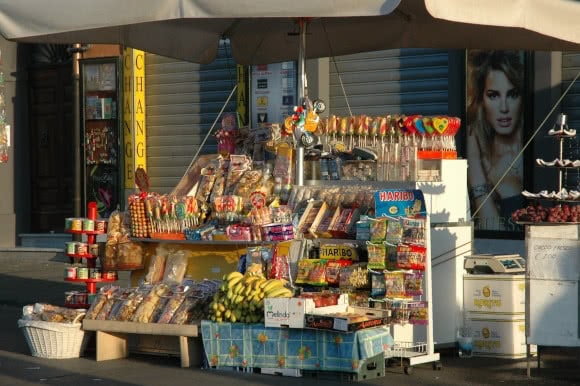
Europe: Anti-migrant sentiment drives exclusion, but Barcelona migrant vendors unite
Vendors in Europe are often migrants, predominantly from Africa but also from beyond. Frequently risking their lives to enter Europe, on arrival many find securing employment extremely challenging, even if they have official documents. Many have no choice but to create their own work, including selling goods on the streets.
Much of the recent coverage on street vending in the region comes from southern Europe and reflects increasing tensions. In Italy in April 2018, an African street vendor was shot dead in Florence by a right-wing extremist, echoing the December 2011 incident when a neo-fascist opened fire at two central markets, killing two Senegalese street vendors and injuring three others.
In June 2018, the Italian interior minister reportedly introduced fines of £6,000 for those purchasing fake designer goods and £13,600 for the vendor selling them.
In May 2018, street vendors protested in Rome in response to a street vendor’s death after a police clap down. Following Africa and Latin America’s trend to criminalize those purchasing from vendors, in June 2018, the Italian interior minister reportedly introduced fines of £6,000 for those purchasing fake designer goods and £13,600 for the vendor selling them.
Vendors in Spain operate in a hostile legislative environment. The 2015 reform of the public security legislation recriminalized vending in the streets. Vendors face confiscations and fines of at least €500 (around US$600), and a potential prison term of between 6 and 24 months.
Even left-leaning politicians are coming under pressure to act in places such as Barcelona, where police have used batons to control irregular immigrant street vendors. The death of a vendor after a police chase in Madrid in March 2018 generated significant debate in Spain about the treatment of migrants.
Vendors have responded to these developments. The union of African vendors — the Sindicato Popular de Vendedores Ambulantes — launched in Barcelona in 2015 has regularly called for the decriminalization of vending by marching on the Spanish Congress of Deputies in March 2017 and the European Parliament in January 2018. Their clothing brand — Top Manta — has significant online presence and support, with regular fashion shows featuring their motto and rallying cry: “legal clothes made by illegal immigrants”.
Confiscations across Europe are often framed as anti-counterfeiting measures, with brand protection agencies in support of confiscations.
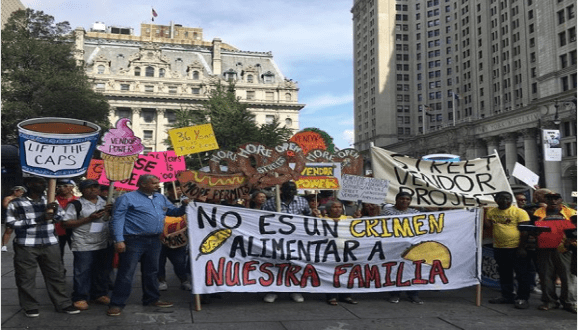
North America: Migrant vendors increasingly under threat, but vending is legalized in Los Angeles
The Trump regime’s anti-migrant stance has led vendors, many of whom are undocumented migrants, to fear immigration police. In New York, where laws governing street vending are described as confusing, convoluted, and contradictory, the city council continues to declare new areas restricted vending zones, notably in downtown Flushing, Queens, and the area around the World Trade Center in lower Manhattan, amid charges of Islamophobia.
Food vendors in New York face particularly precarious circumstances due to the cap on the number of food vending permits, forcing vendors to work in the shadows or pay exorbitant black-market rates for permits. The New York Street Vendor Project has been working tirelessly for the last decade to lift the caps and fight for their place in the city. A new bill revisiting the cap was introduced in 2018, prompting renewed campaigning by the vending community for 4,000 possible permits. A recent class action lawsuit settlement garnered $200,000 in compensation for vendors whose carts were improperly seized.
Food vendors in New York face particularly precarious circumstances due to the cap on the number of food vending permits.
In a move of solidarity after the 2016 election, the Los Angeles City Council removed criminal penalties from the city’s law banning street vending to help protect undocumented immigrants vulnerable under the Trump administration. In an important follow on, in November 2018, the council unanimously voted to legalize street vending — the result of 10 years of campaigning. Supporters pointed to research that estimated that 50,000 vendors in the city contributed $504 million annually to the local economy.
Read WIEGO’s blog article, “As Bangkok Vendors Face Eviction, New York’s Offer Solidarity, Ideas.”
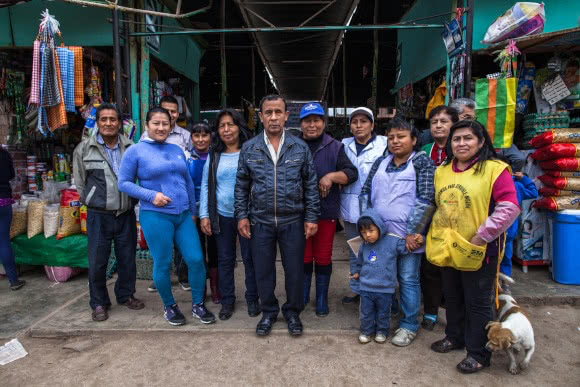
Moving forward an Inclusive Urban Agenda
These news reports paint an unequivocal picture of exclusionary cities everywhere.
Reviewing 18 months of online street vendor news — even taking into account media bias to cover explosive eviction events — has further emboldened WIEGO’s work to support street vendor organizations in claiming their rights to work and to the city.
The situation is even more complicated than this coverage suggests, and there is a great need for in-depth analysis of, and discussion about, the drivers of exclusion, including the role of real estate developers and other private sector players pressuring authorities for additional land, privatization, securitization and protection of their brands.
And while the news shows a troubling global portrait, there were a few noteworthy articles highlighting positive steps forward. Those places that did show progress include the union of African vendors in Spain, which is countering pressures from the big brands by launching their own t-shirt line; the innovative cooperation agreements between vendors and the local authority in Monrovia, Liberia; and the campaign to legalize vending in Los Angeles, in the face of national government hostility.
Reviewing 18 months of online street vendor news — even taking into account media bias to cover explosive eviction events — has further emboldened WIEGO’s work to support street vendor organizations.
These promising examples show the key ingredients that go into advancing inclusivity: the importance of collective action among traders and support from allies; vendors proactively proposing alternative models of vendor management; and the need for better legal frameworks. And when all else fails, there is litigation.
WIEGO’s urban advocacy and research, grounded in our particular cities, provide good examples of innovative and inclusive practices. These models show that progress is not only possible but happening. Creating more inclusive cities — as our news analysis shows — has a long way to go to become a reality, but a more equitable future relies on new legal and policy frameworks to reverse the headlines and create cities for all.
About the Global Monitoring System:
Since October 2013, WIEGO’s Global Monitoring System (GMS) has systematically monitored informal economy news in four languages: English, Spanish, Portuguese and French. The GMS is a critical source of information for advocacy and analysis, highlighting places of concern but also, when covered, examples of inclusive practise. Articles highlighting important developments are disseminated via social media. Synthesized worker group news is regularly sent to worker-based movements and other WIEGO partners as well as to policymakers and practitioners. The goal of the GMS is to raise the visibility of worker struggles and victories across the globe, beyond the countries and cities that any one of these constituencies live and work in, building solidarity across place and space. WIEGO researchers regularly analyze the archive to highlight trends by worker group and on specific topical themes.
Check out WIEGO’s Global Monitoring System and sign up here to receive regular updates.
Feature photo: Street vendors run from police in Rome, Italy. Photo: Steve Rhode/Licensed underCreative Commons
Para leer este artículo en español, vea aquí.
